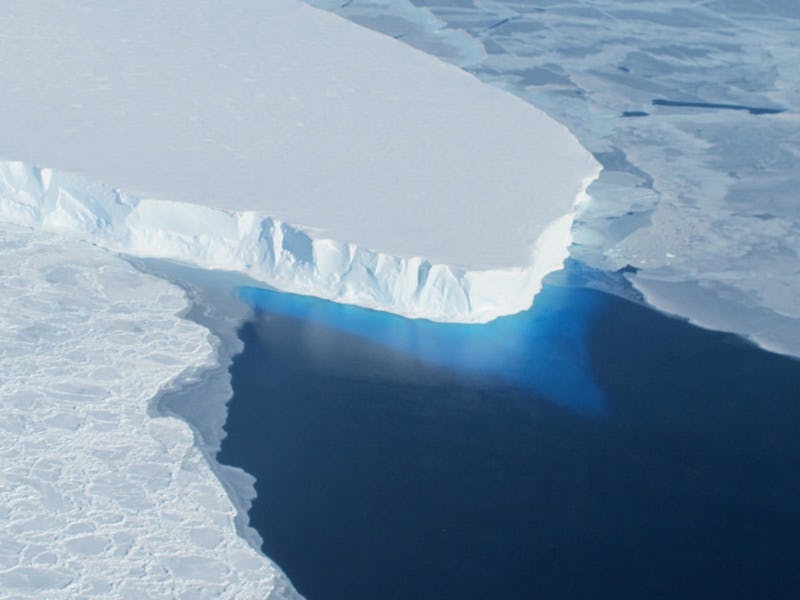Yes, Sea Levels Will Rise Thanks to the New Iceberg in the Southern Ocean
It's a small effect, but it matters a lot.

After watching a dark, colossal crack in Antarctica’s Larsen C ice shelf grow for the past year, scientists confirmed Wednesday morning that the Delaware-sized, trillion-ton iceberg is now freely floating in the chilly Weddell Sea.
Scientists estimate that as the ‘berg melts, it’ll add about 0.1 millimeters to the total sea level rise. When compared to the rise that NASA and NOAA are already measuring — currently 3.4 millimeters per year — 0.1 millimeters might seem relatively inconsequential.
Still, the hulking iceberg will be a conspicuous frozen spectacle for years to come.
If the Larsen C ice shelf, however, was not a shelf — meaning it was on land and not already plopped down in Earth’s ocean — climate scientists like NASA’s Gavin Schmidt estimate the trillion-plus metric tons of ice would have added significantly more water to Earth’s seas, resulting in a rise of some 2.8 millimeters. This amounts to over 80 percent of the sea level rise already happening each year.
These melting estimates are based upon the fact that the iceberg is composed of frozen freshwater, not saltwater, which means that it will add a small amount of volume to the ocean simply because saltwater is denser that freshwater.
The newly-born iceberg’s adventures into Earth’s oceans might not add a consequential amount of water to Earth’s rising seas, but this doesn’t mean it’s unimportant. More of the ice shelf could soon calve, and this mass of ice is responsible for holding back the peninsula’s water-rich glaciers from the ocean. Melting glaciers are one of two reasons why Earth’s seas are rising. The other reason is the simple expansion of the ocean as Earth’s seas become warmer.
The combined effect, according to NASA, has produced about 8 inches (200 millimeters) of sea level rise since 1870, when the carbon-spewing Industrial Revolution was in full swing.
Graph created by Nasa that shows nearly 200 mm of sea level rise since 1870.
This likely means that we’re in for some 3 feet of sea level rise, at minimum, explains Steve Nerem, the lead of NASA’s Sea Level Change Team:
“Given what we know now about how the ocean expands as it warms and how ice sheets and glaciers are adding water to the seas, it’s pretty certain we are locked into at least 3 feet [0.9 meter] of sea level rise. But we don’t know whether it will happen in 100 years or 200 years.”